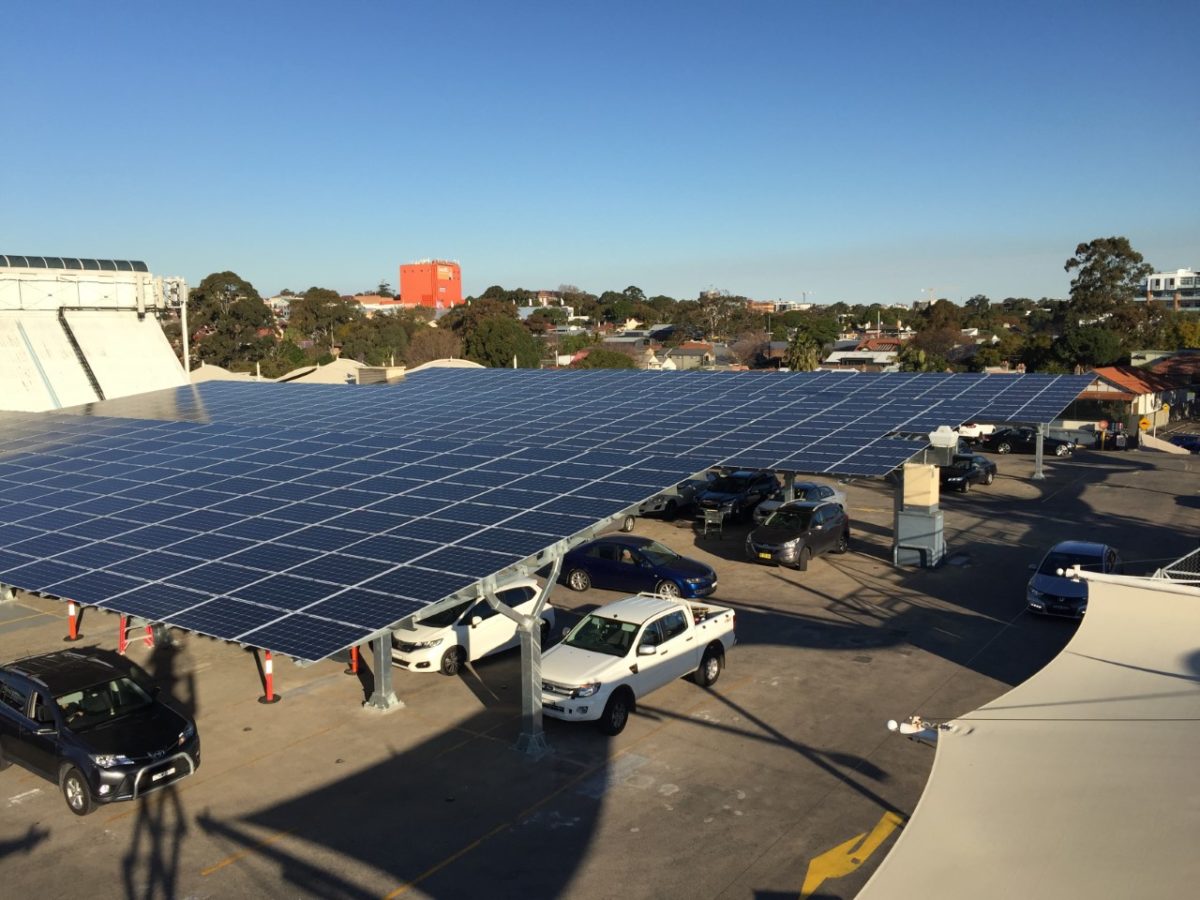Shopping centres across Australia supply their customers with acres of land in which to park their cars, and now these centres are realising their concrete expanses can not only supply them with customers, but clean solar energy too.
One such shopping centre is MarketPlace Leichhardt in Sydney’s chic inner west. The centre recently put its thinking cap on and installed rooftop solar panels upon its carpark which also double as shading for vehicles.
It’s a win-win with the Australian summer on our doorstep; MarketPlace Leichhardt now has a steady source of clean solar energy, and the centre’s customers no longer have to fret about the serious risk of third-degree burns when touching the steering wheel or seatbelt. It is one of the mysteries of modern physics that the metallic tongue of Australian seatbelts seem to absorb more heat than is generated by the sun itself.
This instalment, the first phase of a more extensive solar layout at MarketPlace Leichhardt, utilised Trina Solar’s Duomax M-Plus DEG5 (II) panels. “One of the briefs from the shopping centre owner was that the modules had to be durable and long-lasting while also being aesthetically pleasing because everyone who uses the top floor of the car park will see it,” says Graeme McMullan, managing director of Clean Energy Engineering, which is providing design, project management and installation resources for the project.
“Solar panels are designed to last more than 25 years,” said McMullan, “so using solar panels as shelter is quite innovative and practical.” The panels are coated in a clear polymer which protects each 60-cell monocrystalline module from the sun, whilst also letting light penetrate.
The first phase of the project consists of 305 kW while the second phase, due to be completed by the end of the year, will see the centre’s installation capacity rise to around 430 kW.
Govind Kant, Trina Solar senior country sales manager, notes that shopping centres are increasingly adopting solar panels because they so appositely cover the centre’s daytime peak consumption requirements. Kant notes that commercial building owners are also seeking to reduce their electricity bills and emissions by achieving carbon neutral certification through solar energy.
Trina Solar is eyeing up Australia’s rapidly growing utility-scale solar sector. This week the company showcased its ‘TrinaPro’, an integrated solution combining high output modules with smart PV controllers and trackers, smart inverters and digital cloud-based operations and maintenance software.
The solution looks to meet the challenges currently faced by large-scale solar in Australia. The growing complexity of solar systems means all-in-one integrated systems are now more sought after than diffuse systems. And moreover, rapid and simplified installations in a ‘single window’ reduces the hurdles faced by solar farms located outside major cities, as solar farms tend to be.
Integrated systems are now the systems of choice. The addition of trackers, for instance, is recognised as providing a significant power boost by reducing the effect of shading, not to mention the fact that the panels themselves can be tilted to a perpendicular angle to elude damage during hailstorms.
Trina Solar utilises trackers from Spanish manufacturer Nclave, acquired by Trina in 2018.
It is this author’s hope that more shopping centres across Australia start to utilise solar PV atop their car parks, if not for themselves and their own electricity bills, then for the millions of Australians who don’t want to receive catastrophic burns when returning to the car after spending too long browsing in the cool shops.
This content is protected by copyright and may not be reused. If you want to cooperate with us and would like to reuse some of our content, please contact: editors@pv-magazine.com.









““Solar panels are designed to last more than 25 years,” said McMullan, “so using solar panels as shelter is quite innovative and practical.” The panels are coated in a clear polymer which protects each 60-cell monocrystalline module from the sun, whilst also letting light penetrate.””
Coated in “clear” polymer, yeah not going to be a 25 year reliability product. I’ve come across many cheap solar PV panels with “special plastic”, “polymer” or even a “polymer” Fresnel lens. After about 10 years in harsh environments, compare the Coachella Valley, CA temperature extremes with Australia’s, they will yellow, crack and cause shorts in the panels if and when that rare down pour occurs. Even “ruggedized” resin based sealants yellow, glass either as a spray on or direct encapsulation between glass plates is still the best long term product.